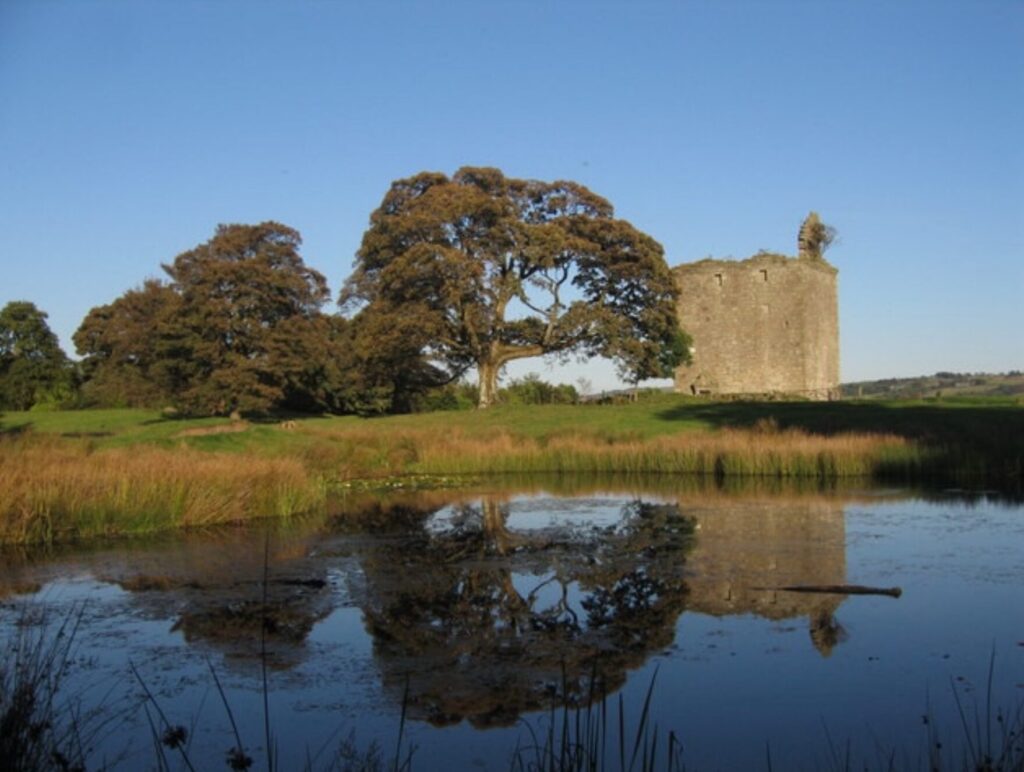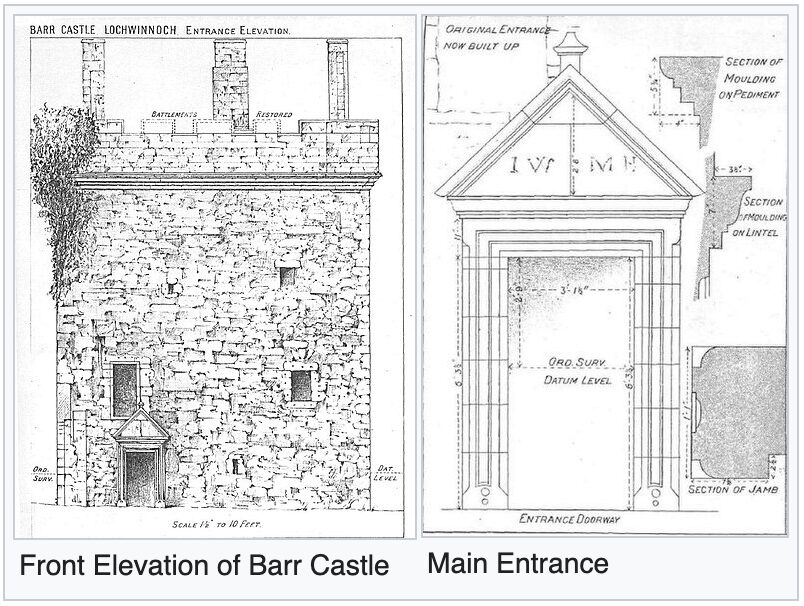Barr Castle
Renfrewshire, Scotland






Barr Castle Renfrewshire is a ruined but largely intact tower house dating to the early 16th century on slopes which descend gently eastwards towards the Barr Loch, one of a number of freshwater lochs in the area which drain into the River Calder, and is part of an RSPB Nature Reserve. The castle is easily visible from the main road, but is in a field used for grazing.
The ruin is that of a rectangular tower with remnants of the western end of the associated courtyard, including the break for the arched entrance. The tower is entered at ground floor level through a door which leads into a small hallway largely within the thickness of the wall. From this corridor, doorways lead into the two vaulted basement rooms, one of which was the kitchen, and a couple of steps lead to a winding staircase leading up to the first floor. The basement rooms are lit by splayed gun-loops, one in the south gable, and one serving each room in the east wall; a smaller opening in the west wall provides a modicum of light into the hallway.
The main hall occupies the whole first floor, with windows in all four directions, has a small mural chamber in the north-east corner, and the main fireplace midway down the west wall. The original entrance doorway is above the modern one, between the fireplace and the main stairwell – but has been walled up. A second round stairwell in the south-west corner at first, second and third floor level suggests that the upper storeys were subdivided, as the main stairwell continues to the wallhead, which is provided with round bartizan turrets at the corners. The roof has fallen, but there was an attic level as well.
The lands of Barr were part of the lordship of Paisley, and were held by the Glen family from Paisley Abbey in the mid 15th century. The first grant was received by James Glen, in 1506, and a second James Glen received his charter to the lands of Barr in 1544, and was forfeited between 1568-73 for fighting for Queen Mary at Langside. His son William was followed by a second William, and then to the first William’s younger son Alexander in 1610 – neither had male children to inherit, and so the lands of Barr passed to Alexanders nephew Archibald in 1629.
However, in the register of the privy council, a note reads “protectioun grantit to Archibald Glen of Bar for coming in to Edinburgh to draw up securities for selling of his lands till the secund of Februarie nixt” which is dated March/April 1632. It appears that he sold the lands and tower of Barr to John Wallace and Margaret Hamilton of Ferguslie, and their initials are carved over the entrance doorway, which must have been work carried out for them; there were several pieces of work carried out in the latter 17th century which probably involved the demolition of the courtyard buildings for their stone, and scars of extensions can be seen on the west and south walls of the tower.
They were followed by their son John, who left no trace on the castle, and he by his son John, whose initials along with those of his wife Jean Cochrane are carved in a lintel above the stairwell with the date 1680. By 1695, their son Alexander was laird, and in about 1747 his son John, who died by 1780. Their son John died in 1825 without children, having sold the estate to the MacDowall family, who are still the landholders.